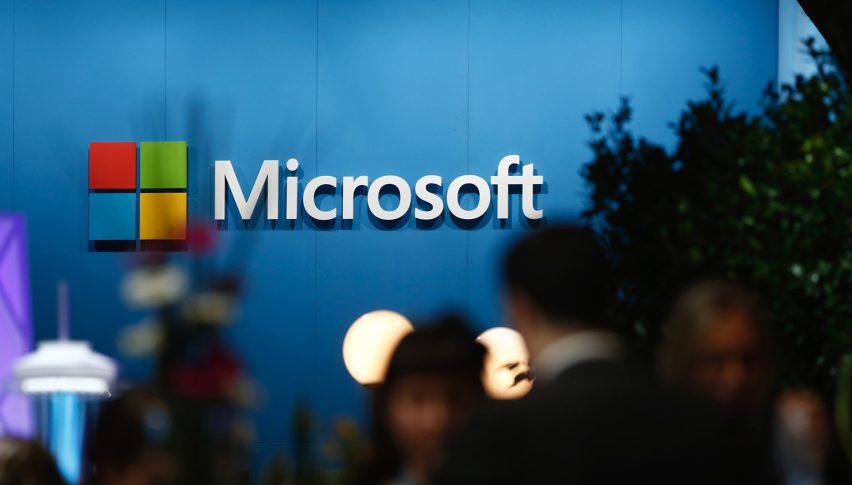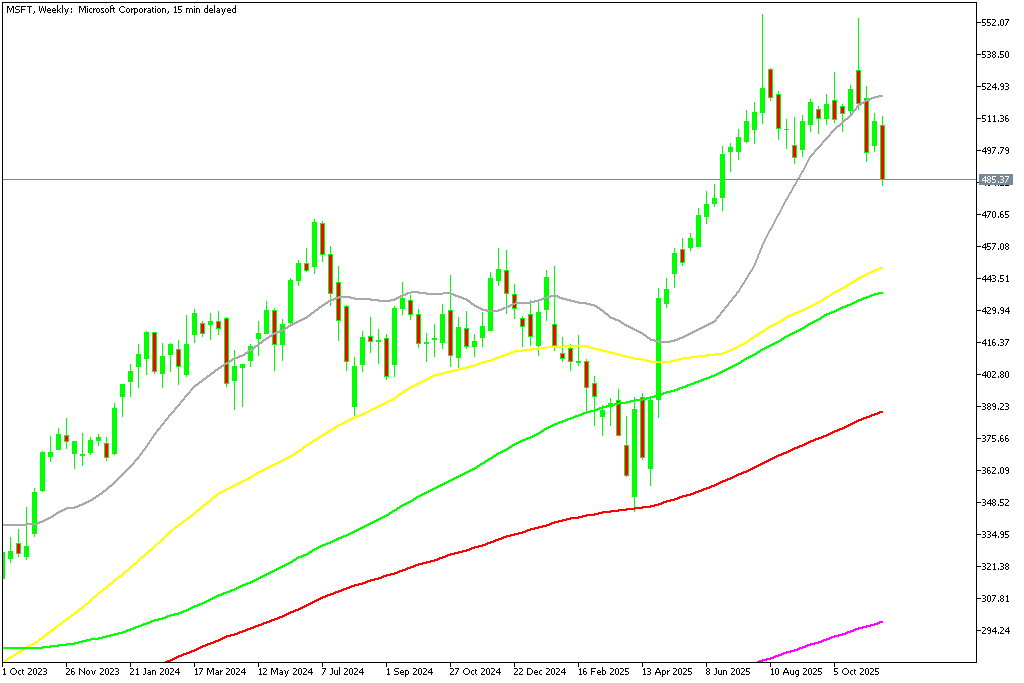MSFT Stock Drops 5% in 2 Days as AI Costs Soar, Despite Microsoft-Nvidia Deal
Due to rising expenses, internal disputes, and widespread mistrust of artificial intelligence, Microsoft's stock is rapidly falling as...

Quick overview
- Microsoft's stock has dropped approximately 5% this week due to rising expenses and skepticism surrounding the AI sector.
- The company's recent rally has faltered, with shares falling below $500 and significant support now focused around the $468 region.
- Internal tensions are rising as employee protests over AI contracts and geopolitical partnerships intensify, alongside concerns about security and product performance.
- Despite beating Q3 earnings forecasts, Microsoft's substantial AI-related costs have raised doubts about its profit margins and long-term stability.
Live MSFT Chart
[[MSFT-graph]]Due to rising expenses, internal disputes, and widespread mistrust of artificial intelligence, Microsoft’s stock is rapidly falling as a market that once believed the company was unbeatable grows apprehensive.
Market Sentiment Turns Sharply Against Microsoft
Investor enthusiasm for Microsoft has deteriorated at a striking pace. The stock is down roughly 5% so far this week as doubts about the AI sector intensify following a wave of analyst downgrades and concerns that the industry is entrenched in bubble-like conditions. With Nvidia’s earnings report expected to validate those fears, traders have grown increasingly cautious toward megacap tech, and Microsoft sits at the center of that shift.
A Once-Powerful Rally Falters
The optimism that followed Microsoft’s strong Q2 earnings has evaporated almost as quickly as it arrived. After briefly touching all-time highs above $555, the stock attempted another breakout but was met with firm resistance near $553.70. The reversal was swift and aggressive, dragging the share price below $500 and slicing through multiple important moving averages. This breakdown has shaken confidence in the persistence of Microsoft’s long-running uptrend.
Market participants are now focused on the $468 region, which many view as the next significant support zone. Heavy profit-taking, fading institutional conviction, and rising volatility suggest an important psychological shift: the perception of Microsoft as the market’s most stable fortress is losing credibility.
Technical Deterioration Accelerates
The weekly chart reveals a deeper concern. Microsoft’s brief push above its 20-week simple moving average was quickly rejected, and the stock has again fallen beneath it — a historically bearish signal that frequently precedes extended corrective phases. The decline continued today with Microsoft sliding to $485, reinforcing the view that sellers remain firmly in control.
MSFT Chart Weekly – Diving Below the 20 SMA
Adding to the unease, Vice Chair and President Brad Smith sold more than 30,000 shares in early November, a transaction worth nearly $16 million. While insider sales do not always forecast weakness, the timing could hardly have been worse for investor sentiment.
AI Investments Shift from Strength to Liability
Although Microsoft comfortably beat Q3 forecasts with earnings of $3.72 per share on $77.67 billion in revenue, the numbers were overshadowed by the sheer scale of its AI expenses. More than $3.1 billion in costs tied to OpenAI erased roughly forty cents per share from profits. CFO Amy Hood cautioned that spending will continue to rise as Microsoft deepens its AI infrastructure strategy, raising doubts about how long margins can withstand the pressure.
New Alliances Highlight Strategic Tensions
In parallel, Microsoft and Nvidia have strengthened their partnership through new investments in Anthropic, integrating Claude’s models into Azure’s ecosystem. The collaboration is meant to enhance Azure’s capabilities, but it also underscores Microsoft’s increasingly diffuse AI strategy as it works simultaneously with competing model developers.
Meanwhile, the Microsoft–OpenAI relationship appears strained. Reports of OpenAI exploring its own chip partnerships with Broadcom and potentially launching a talent platform that competes with LinkedIn have raised legitimate questions about Microsoft’s influence over its most important AI partner.
Mounting Security and Product Concerns
Recent internal AI data leaks have renewed scrutiny of Microsoft’s security posture, reviving fears that the company is struggling to maintain control over its rapidly expanding AI infrastructure. Compounding the problem, Xbox hardware sales fell 29% year-over-year, highlighting ongoing stagnation in a division already facing competitive pressure and creative fatigue.
Ethical Debates and Internal Discontent Add to the Weight
Microsoft is also dealing with rising internal turmoil. Employee protests have intensified over the company’s defense-related AI contracts and its partnerships connected to geopolitical conflicts. At the same time, Microsoft’s deepening expansion into the Middle East — including a $15 billion AI-centric data center project in the UAE with G42 — has provoked criticism from both human-rights advocates and shareholders.
Together, these financial, ethical, and operational pressures paint a picture of a company entering a more uncertain phase, where the combination of rising costs, strategic conflict, and weakening technical performance is reshaping investor expectations.
- Check out our free forex signals
- Follow the top economic events on FX Leaders economic calendar
- Trade better, discover more Forex Trading Strategies
- Open a FREE Trading Account



